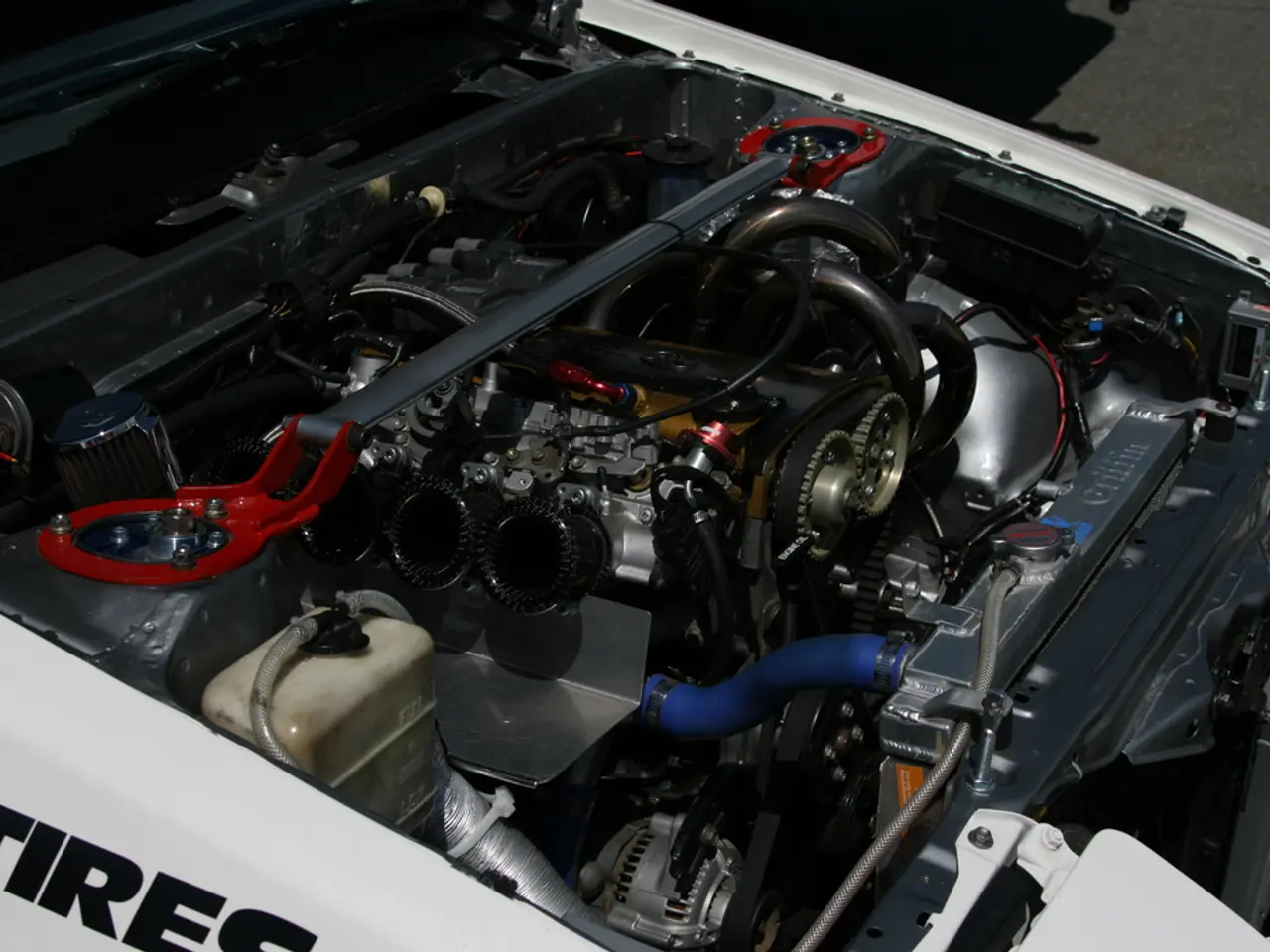The Functioning of Magnetos: An Explanation
In the world of aviation, the magneto is an essential component that plays a crucial role in the functioning of a piston engine. This self-contained equipment, which generates electrical power for spark plugs, is the unsung hero that keeps aircraft engines running smoothly.
At its core, a magneto is a high-voltage generator powered by a rotating permanent magnet. As the engine runs and drives the magneto, the magnet rotates, changing the magnetic flux through the primary winding of the coil inside the magneto. This flux change induces a current in the primary coil, which is approximately 200 turns around one side of the armature, a "U" shaped iron bar that serves as the armature in a magneto.
When the contact breaker (points) opens at the correct timing, it interrupts the current flow, causing the magnetic field in the coil to collapse suddenly. This collapse induces a very high voltage, up to 20,000 volts, in the secondary winding of the coil, which is wrapped around the other side of the armature approximately 20,000 times. This high voltage is then sent via the distributor to the appropriate spark plug, producing a spark that ignites the air-fuel mixture in the cylinder, enabling combustion.
The magneto system is critical to the functioning of an aircraft piston engine. However, it requires maintenance and can be difficult to maintain and often cannot be repaired when damaged. Oil seals, which can deteriorate with age and cause leakage, are a common culprit for magneto failure.
Despite these challenges, the magneto system is more reliable than a battery-based ignition system, especially in aircraft, as it does not rely on external systems. Modern magnetos are compact and relatively light due to the use of cobalt steel and nickel aluminum magnet metals. They also compensate for the fact that battery ignition systems can provide a better spark to spark plugs when starting an engine.
Understanding the magneto system is crucial to understanding how an aircraft piston engine functions. Common issues, particularly during start, become significantly easier to diagnose when you understand the aircraft's ignition system. Another common magneto issue is arcing at the breaker points, which causes them to erode and leads to an unstable magnetic field collapse.
It's important to note that the magneto is only one part of the aircraft's ignition system and the aircraft's engine itself. The magneto timing is controlled by a cam connected to the crankshaft, and the system is expensive, making it a specialised component used only in specific applications such as aviation.
In summary, the magneto functions as an engine-driven high-voltage generator using a rotating magnet and coil, with timing and voltage pulse generation controlled by the contact breaker mechanism that triggers spark delivery at the correct engine cycle phase. Its reliability, even in the absence of external power supplies, makes it an invaluable part of aircraft piston engines.
A private pilot, when faced with a malfunctioning magneto system in their aircraft, might turn to technology to troubleshoot the issue, such as data-and-cloud-computing platforms that can help diagnose engine problems. To ensure efficient flight operations and reduced reliance on maintenance crews, the pilot could consider integrating a drone equipped with advanced diagnostic sensors into their pre-flight inspections, targeting specific components like the magneto system.




